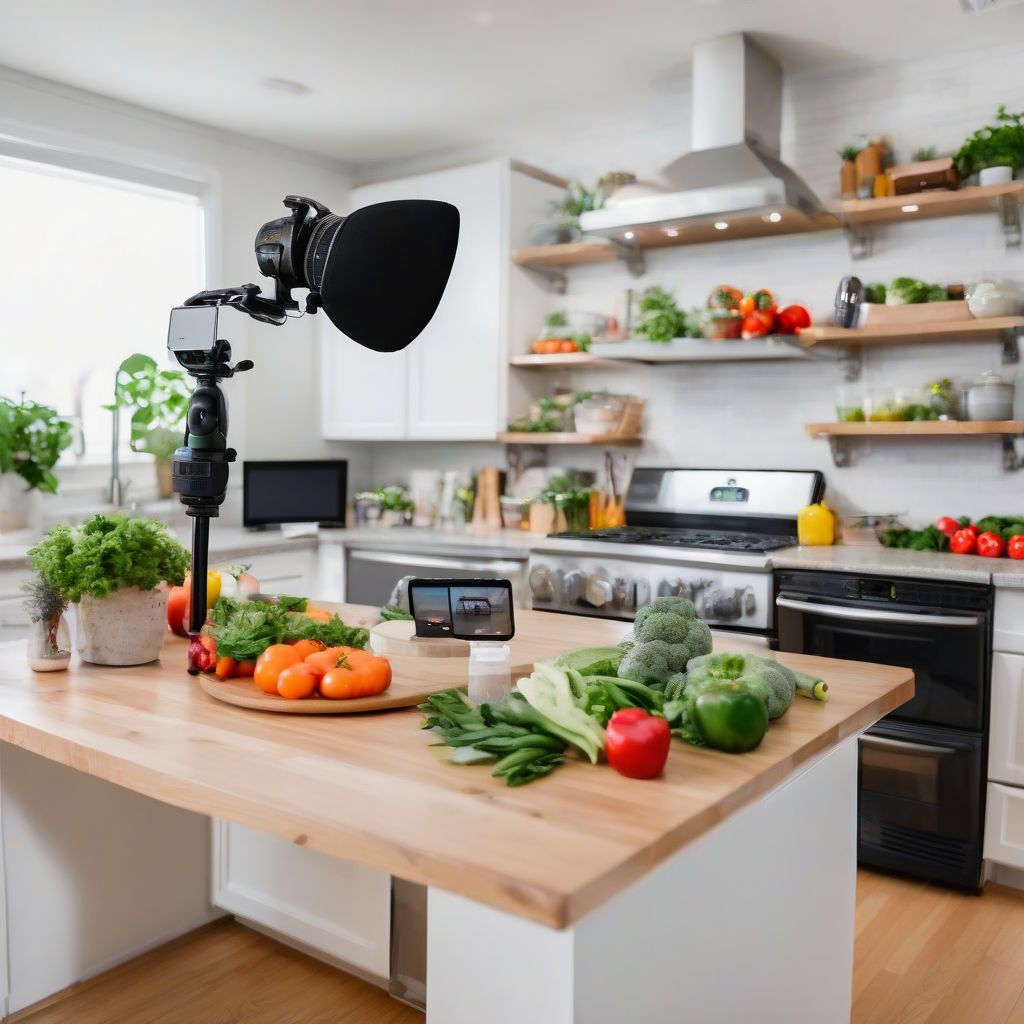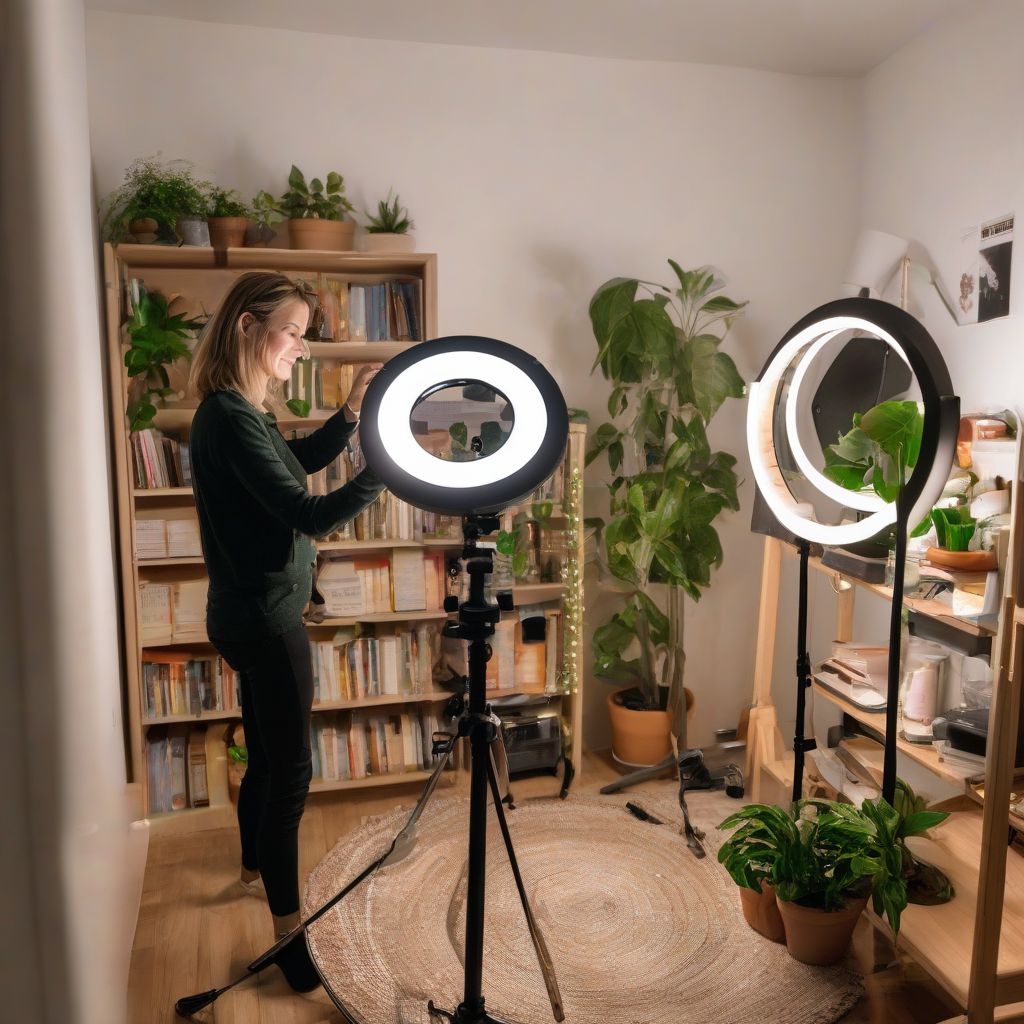Ever dreamt of having your own space to film your cooking shows or nutrition consultations, but the thought of expensive studios makes you cringe? You’re not alone! Many aspiring content creators feel the same way. The good news is, you absolutely can set up a professional-looking home studio on a budget without sacrificing quality. As a fellow health and wellness enthusiast, I’m here to guide you through every step!
Defining Your Space and Needs
What type of content will you be creating?
Before diving into equipment and decor, clearly define the purpose of your home studio. Will you be filming cooking demonstrations, hosting live nutrition consultations, or recording educational videos?
What space in your home best suits your needs?
A spare bedroom, a well-lit corner in your living room, or even your kitchen island can transform into the perfect studio. Consider factors like natural lighting, background noise, and available space.
 Home Studio Setup
Home Studio Setup
Essential Equipment on a Budget
High-quality equipment doesn’t have to break the bank. Here are some budget-friendly options:
Lighting is Key
- Natural Light: If possible, position your studio near a large window for soft, flattering light.
- Ring Light: A ring light is an affordable way to achieve even, balanced lighting, perfect for close-up shots.
- Softboxes: For a more professional look, consider investing in softboxes, which diffuse light and minimize harsh shadows.
Camera Clarity
- Smartphone Camera: Today’s smartphones boast impressive camera capabilities. Invest in a tripod for stability.
- DSLR Camera (Used): You can often find fantastic deals on used DSLRs, offering excellent video quality.
Audio Excellence
- Lavalier Microphone: For clear and crisp audio, a lavalier microphone that clips onto your clothing is ideal.
- USB Microphone: A budget-friendly USB microphone provides decent sound quality for recording voiceovers.
Background and Props
- Neutral Backdrop: A simple white or grey backdrop creates a clean and professional look.
- Plants and Decor: Add personality to your space with plants, cookbooks, or other items relevant to your brand.
DIY Hacks and Affordable Solutions
Soundproofing on a Dime
- Rugs and Curtains: Thick rugs and curtains can help absorb echoes and reduce background noise.
- DIY Sound Panels: Create your own sound panels using acoustic foam or even moving blankets attached to wooden frames.
Lighting Tricks
- Reflectors: Use white foam boards or even aluminum foil to reflect light back onto your subject and brighten up shadows.
- Window Diffuser: A sheer white curtain can soften harsh sunlight streaming through your window.
Optimizing Your Home Studio Setup
Test, Adjust, and Repeat
Once you’ve set up your home studio, experiment with different camera angles, lighting setups, and audio settings. Record test videos to ensure everything looks and sounds its best.
Seek Feedback
Don’t be afraid to ask for feedback from friends, family, or online communities. Fresh eyes can provide valuable insights and help you identify areas for improvement.
 Home Studio Lighting
Home Studio Lighting
Conclusion
Creating a professional home studio on a budget is entirely achievable with a bit of creativity and resourcefulness. Remember to prioritize good lighting and audio quality, and don’t hesitate to experiment with DIY solutions.
As you embark on your content creation journey, keep in mind that the most important element is your passion and expertise. Share your knowledge with the world, and don’t be afraid to let your unique personality shine through!
Now, I’d love to hear from you! What are your biggest challenges in setting up a home studio? Share your thoughts and questions in the comments below.
[amazon bestseller=”ring-light”]
